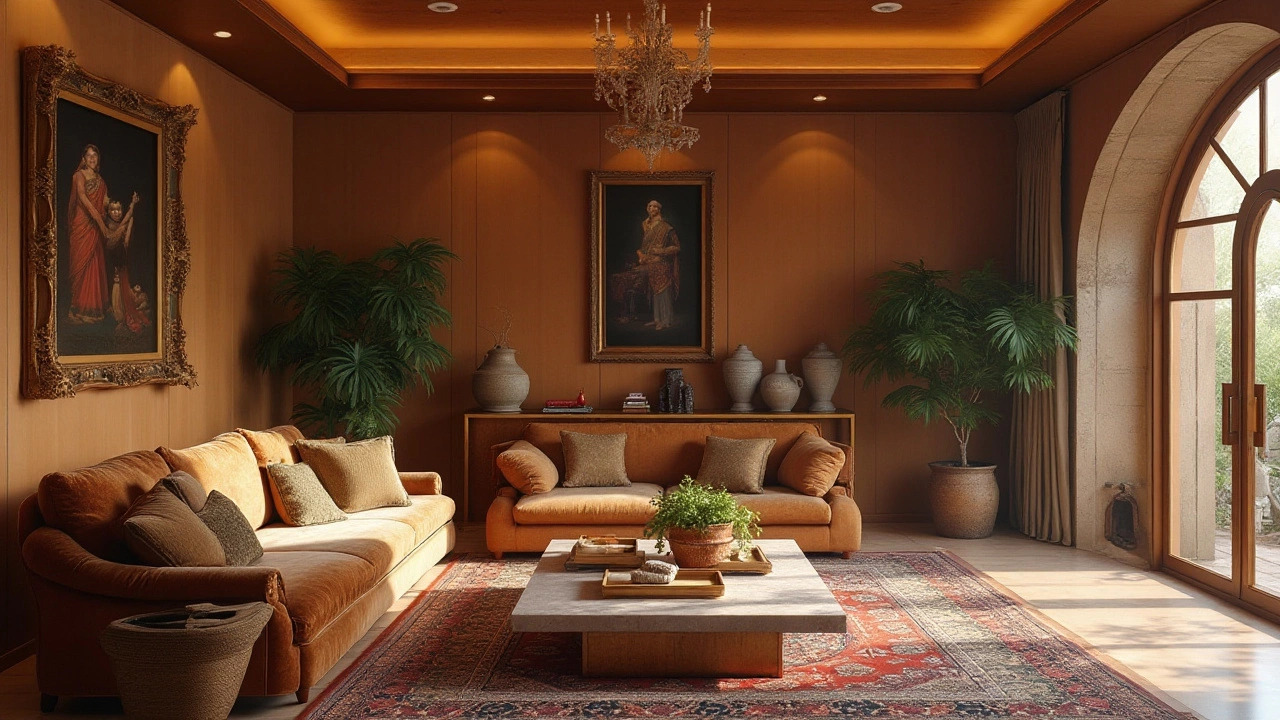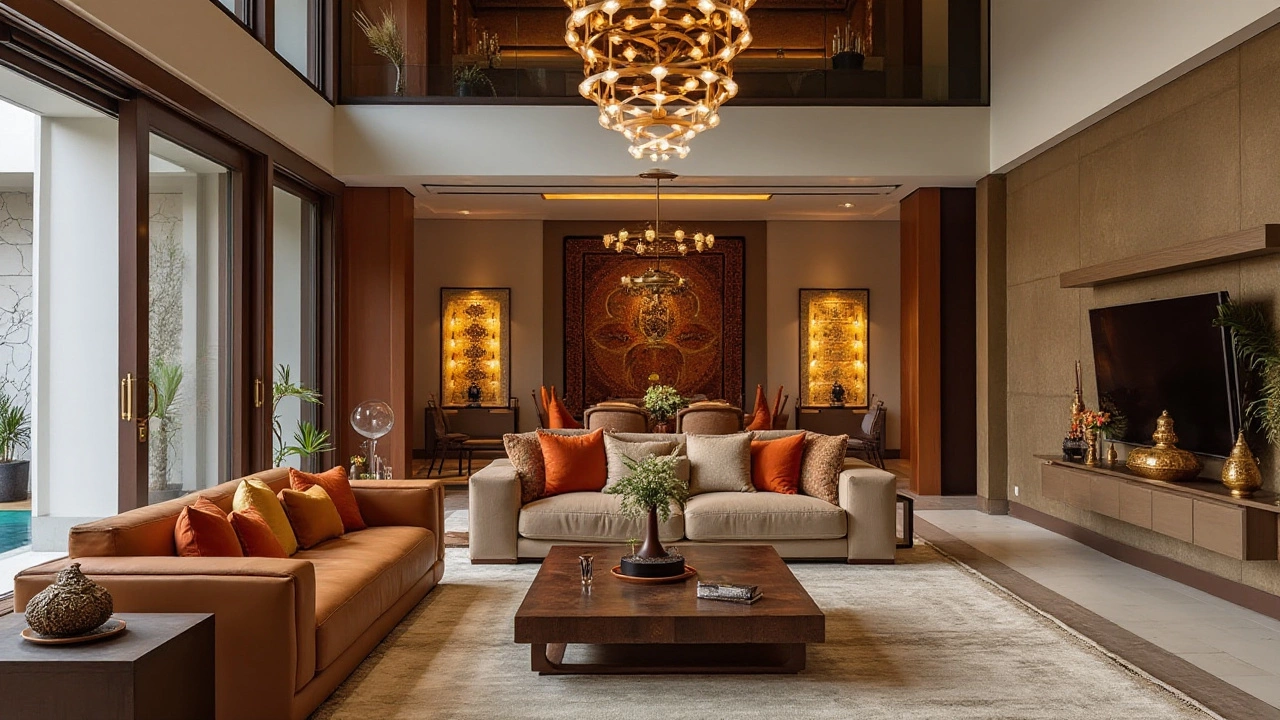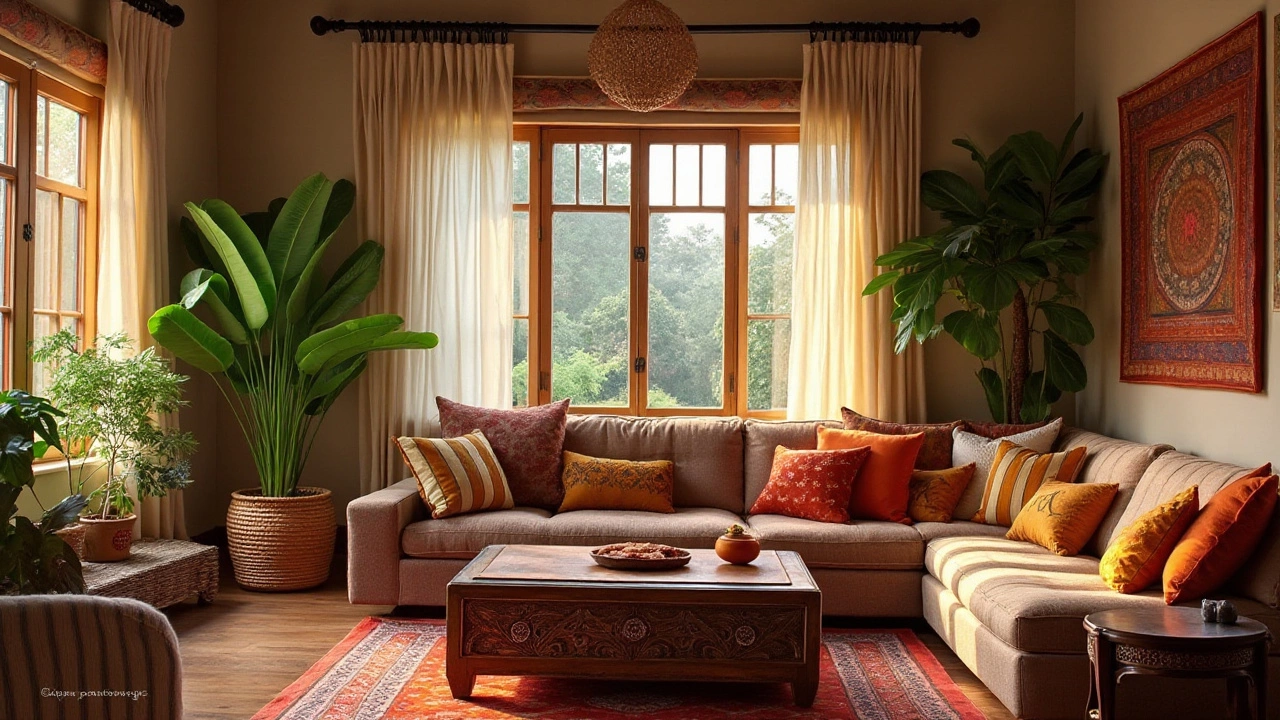Creating a beautiful and functional living room often hinges on details that might not seem immediately obvious. One such detail is the spacing between your couch and coffee table. This minor adjustment can significantly impact your room's comfort and appearance. The right spacing not only makes your living area look well-arranged but also ensures that it functions smoothly in your day-to-day life.
Whether you're drawing up plans for a new layout or simply want to tweak your current setup, understanding the ideal distance between your couch and coffee table is crucial. Too close, and you risk clutter and inconvenience; too far, and the functionality gets compromised. Let's delve into the factors that can help you achieve that harmonious balance.
- Ideal Spacing Guidelines
- Adaptations for Small Spaces
- Choosing the Right Furniture Size
- Creative Space Solutions
Ideal Spacing Guidelines
When it comes to arranging your living room, one of the key considerations is how much space to leave between your couch and coffee table. It might seem like a small matter, but it's a critical element that influences both the aesthetics and functionality of your living space. Experts in interior design frequently recommend leaving a gap of about 18 inches between these pieces of furniture. This spacing is not arbitrary but based on practical considerations that ensure ease of movement and comfort. Allowing for this distance means you can easily walk between the couch and the table without feeling cramped or awkward.
Having the right spacing is crucial for several reasons. First, it enables you and your guests to sit comfortably without having to twist awkwardly to reach for drinks or snacks on the coffee table. A distance of 18 inches prevents stretching or leaning too much, promoting relaxation even during casual gatherings. Second, ample spacing minimizes the risk of accidents, like stubbing toes or knocking things over. Room layout plays a significant role here, too; if you have a small or unusually shaped room, adjustments might be necessary. An interesting perspective on this comes from interior designer Sarah Richardson who once said,
"Space planning is like completing a puzzle—every piece has its place for the whole picture to function beautifully."
It's not just about leaving space, though. It's essential to consider the size and height of your furniture. A coffee table should be about the same height as the seat cushions of your couch or slightly lower. This alignment ensures that the table is easily accessible while sitting, enhancing comfort and user experience. If your coffee table is too high or too low, even the perfectly calculated spacing won't prevent usability issues. For rooms with more modern, minimalist designs, tables tend to be lower, whereas traditional setups might see them slightly higher. This height balance is crucial, especially when considering how it affects the overall look of the room.
For those keen on statistics, a survey by the Journal of Environmental Psychology suggests that proper furniture arrangement and spacing can increase feelings of satisfaction in home environments by up to 20%. Unquestionably, the right spacing contributes to the psychological comfort of a room. It's a reminder that good interior design affects not just the eye but also the mind. Besides comfort, this arrangement supports a balanced aesthetic, which is soothing and pleasing to the senses all around.
With these facts in mind, adjusting your couch and coffee table spacing becomes more than a mere visual decision; it's an integral part of how your living space functions. Achieving that perfect balance requires attention to how each element in the room interacts with others, forming a cohesive and welcoming space. Whether entertaining guests or enjoying a quiet evening, this seemingly minor adjustment can have a remarkable impact on your living space.

Adaptations for Small Spaces
When working with small spaces, maximizing both style and functionality in your living room can be quite a delightful challenge. Every inch matters, and finding the right distance between your couch and coffee table is paramount. Aiming for a space that is too wide may eat up precious room that could be better utilized, while placing them too close can create a cramped, uncomfortable feel. Experts in interior design suggest that in tighter quarters, leaving a distance of 12 to 18 inches between the couch and coffee table often strikes the perfect balance of practicality and accessibility.
In petite living areas, consider utilizing furniture with dual purposes. Coffee tables that double as storage units or those with nesting capabilities can be a game changer. These not only save on space but also keep the area decluttered, which is vital when every item is competing for space. Glass or acrylic tables can create an illusion of open space, making the room appear larger than it is. Remember, transparency can be your ally in small spaces, as Daniel O'Connor, a renowned interior stylist, puts it,
"In the world of small interior spaces, see-through furniture is akin to a window with a view. It opens up the room and provides breathing space that’s both figurative and very real."
For layouts where a coffee table might feel crowded, an alternative is to forego the traditional rectangular table and opt for a round one. This can help improve the flow of movement within the room, eliminating sharp edges that may otherwise impede pathways. A round table offers the added benefit of naturally promoting conversation, making it suitable for small gatherings. Also, should you find the need to adjust for a varied size arrangement, easily shifting slightly the orientation or positioning of a round table might allow for better seating configurations without compromising much traffic area.
If possible, explore modular furniture systems. These allow you to reconfigure your living room setup on a whim. Perhaps today it’s a lounging movie night with the coffee table pulled closer for easy reach of refreshments, while tomorrow might see a brighter setup where the table recedes for a more open space feel. Adjustable designs in furniture can cater to both the permanent and the flexible needs of space management. In smaller spaces, keeping multiple layout options gives versatility which can turn even the meekest of spaces into a dynamic living environment.
For those contending with major constraints, smaller coffee tables or the use of ottomans can work excellently. Ottomans provide comfort as footrests and can also serve as makeshift tables by adding a firm tray on top. Some even offer hidden storage which can be invaluable in a compact space. Bright, light-colored fabric or leather can further enhance this effect, giving the living room an inviting, airy atmosphere. This method can preserve not only the aesthetic harmony but also add a much-needed utility to everyday life, showing that good things do indeed come in small packages.

Choosing the Right Furniture Size
When selecting the perfect furniture size for your living room, it's like crafting a story where every element plays its part seamlessly. Your couch and coffee table are the lead characters, and together they narrate your style and comfort preferences. It's important to first measure the dimensions of your living space before making any purchases. Typically, the length of your couch should be aligned with the longest wall in the room which can help in creating a natural flow and balance. Consider couches that range from 72 to 96 inches in length for standard-sized rooms. Not only does this measurement accommodate the average living room, but it also maintains harmony with the spatial configuration around the coffee table.
Your coffee table is like the punctuation that adds grace to your setup. Standard recommendations suggest that your coffee table should be about two-thirds the length of your couch, allowing it to function elegantly without overwhelming the visual field. For example, if your couch is 96 inches, a coffee table around 64 inches would be ideal. The table should sit at a height that's roughly equal to or slightly lower than the couch's seat height, typically between 16 to 18 inches. This provides a polished look while making it comfortable to reach for items on the table. Intriguingly, Emily Henderson, interior designer, puts it succinctly, "Your coffee table is like the handshake of your living room—it should be inviting, practical, and just perfect in every sense."
As you select furniture, remember to consider proportion and scale. These elements are all about ensuring that each piece complements the rest without overpowering or underwhelming the space. This can be particularly tricky in smaller spaces where every piece counts a little more. Opt for multifunctional pieces like a coffee table with storage or a couch with a minimal frame. Maintaining proportion might also involve experimenting with lighter colors and glass-topped tables which trick the eye into perceiving a larger space. Many designers use these tricks to imbue a sense of openness and airiness.
Here's a quick list of what to keep in mind while choosing:
- Couch Length: Suit the longest wall.
- Coffee Table Proportion: About two-thirds the couch length.
- Height Coordination: Table equal to or slightly below couch height.
- Multi-functional Furniture: Ideal for maximizing small spaces.
- Color and Material: Use glass or light colors to expand perceived space.

Creative Space Solutions
Redefining the layout of your living room to optimize space between a couch and a coffee table can lead to transformative design solutions that enhance both aesthetic appeal and functionality. When the conventional spacing guidelines don't fit the dimensions or the flow of your space, it becomes essential to think outside the box. One creative solution is integrating multi-functional furniture. This isn't just about finding the right furniture size, but also about choosing pieces that justify their presence in more ways than one. Imagine a coffee table with storage facilities or foldable features, adapting according to your room’s usage patterns.
An excellent strategy involves experimenting with varying heights and materials for coffee tables to introduce diversity that does not overwhelm the space. Mixing a low-level Japanese-inspired table with a high-backed couch, for instance, can create a visual interest and maintain practicality, offering both seating comfort and surface functionality. A quote from interior design guru Nate Berkus often comes to mind:
"Your home should tell the story of who you are, and be a collection of what you love."This perspective invites creativity into every corner, including the space between furniture.
An often overlooked element is the use of rugs to define and embellish your space. The right rug can make the distance between your couch and coffee table appear intentional and stylish. By selecting a rug that partially covers the couch legs and extends under the table, you fabricate a zone that visually unifies these pieces, providing a cozy, yet chic separation from the rest of the room. This approach not only adds a layer of design sophistication but also softens acoustic impacts, creating a more tranquil environment.
Lighting also plays a crucial role in space management. Proper lighting can dramatically alter how a space is perceived. Installing adjustable overhead fixtures or elegant floor lamps can direct focus onto the coffee table, disguising the distances between furniture pieces without compromising on space functionality. For those looking to go one step further, incorporating smart, programmable lighting systems can revolutionize the interaction with the living area, allowing for different moods and settings that subtly transform the space's proportions.
Lastly, consider adding floating shelves or wall mounts as alternatives to heavy furniture that might crowd the floor space. This way, you maintain a strategic open area that doesn't obstruct the flow and movement. These functional yet stylish additions work particularly well for a seamless modern look that doesn't sacrifice the vital room elements. By coordinating the style and color of the shelves with your couch and coffee table, you can ensure continuity and elegance throughout the room.

